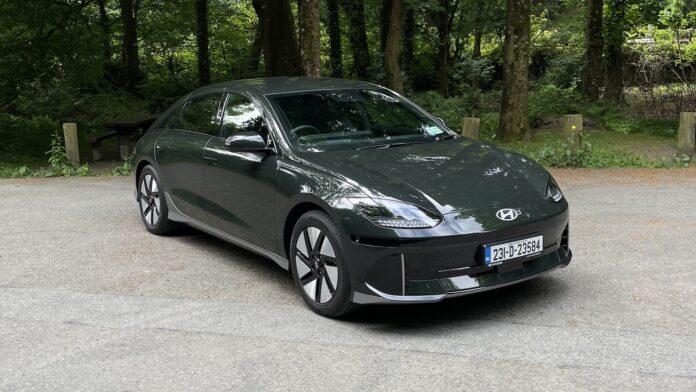14/06/2023 Hyundai’s most car-like EV has been picking up awards right left and centre, and having spent a week in the car I can see why. The car’s shape is refreshingly ‘not an SUV’ and clearly designed with aerodynamic efficiency in mind. It cuts through the air like an eel through a fisherman’s hands thanks to an incredibly low drag figure of just 0.21cd. The Ioniq 6 slots in to the mid-priced full size EV sector starting from €48,295 and rising to €71,250. It is available with a choice of battery: 53kWh and 77kWh. The majority of models are two wheel drive (single motor), with an all wheel drive dual motor (77kWh) topping the range.
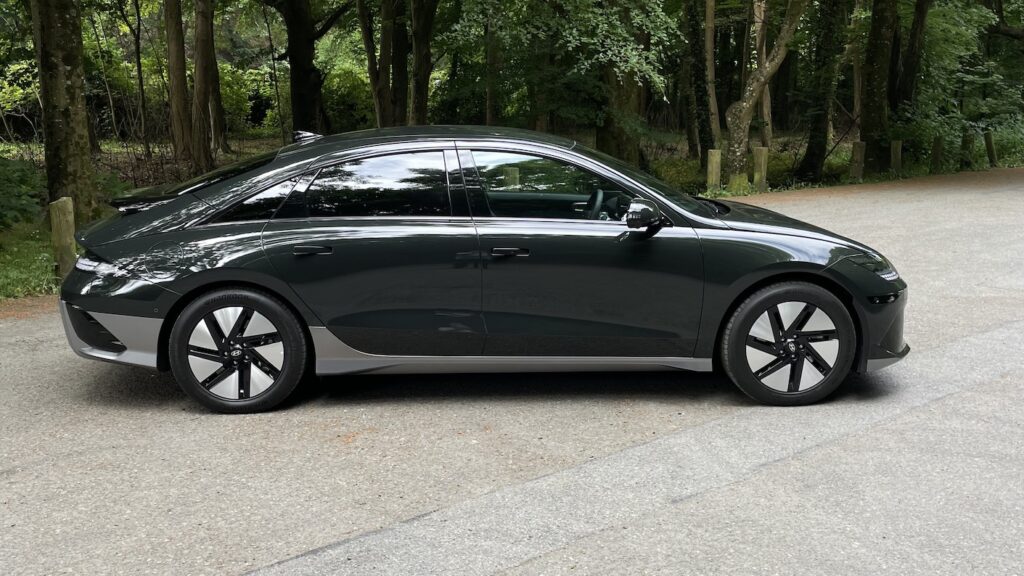
The four-door saloon features a front end that is sleek, low with active aerodynamics – below bumper line flaps open and close – aiding optimal battery temperature control. The eye is led from the front over a flowing roofline that resolves in quite an unusual looking rear. The car’s shape nods to the classic Porsche 911 and its appearance is quite divisive. Hyundai has some of Europe’s best designers on its books and the Ioniq 6 clearly nods to a germanic past – and is a grower. The boot is not overly large, but fits golf clubs, while more importantly for me (I’m not a golfist) accommodated my favourite Bass guitar with only a bit of fettling. Hyundai appropriately uses the word ‘Streamliner’ to describe the exterior shape.Everywhere you look the Ioniq 6’s exterior throws up interesting design detail. Its styling features an evolution of the blockier Ioniq 5’s contemporary lighting design. The heavily tinted rear windows will mean you won’t see the Ioniq 6 as a taxi (regulations ban them) and for me the glass could be a lighter shade to improve the side-on view – I always think of commercial vehicles when I see overly tinted rears.
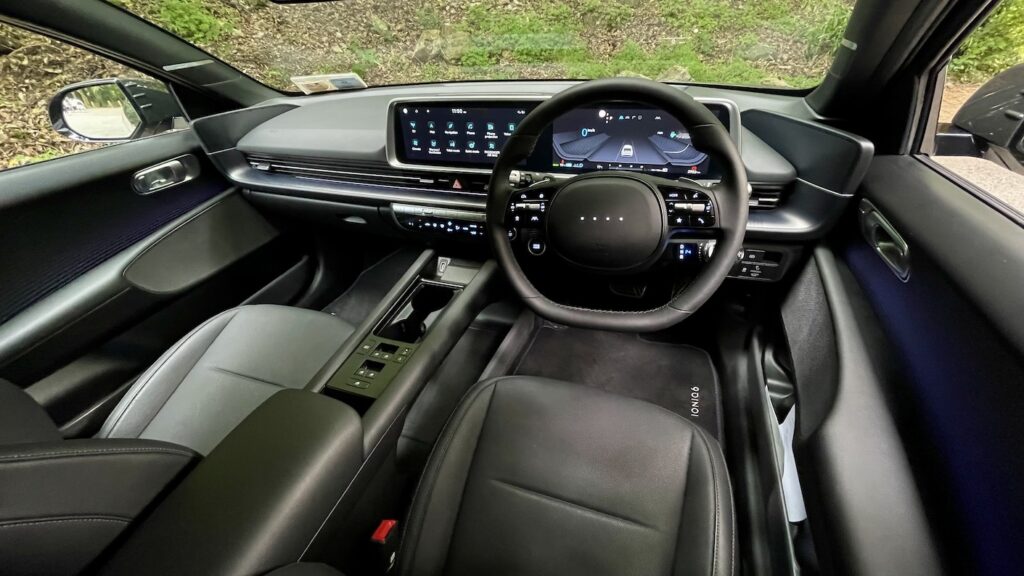
Inside, as you’d expect from an EV of this size, the cabin is vast. Five people will fit, four adults in comfort with little complaint and there is tons of rear legroom. The seating is versatile, on higher grades the 8-way adjustable front seats can fold near flat. Up front there is a large single framed digital display. Standard equipment is impressive and shames some premium brand rivals. Our ‘Signature’ grade test car (Signature, Elegance and Finesse) featured a driver’s head up display too. A large centre console features storage, the four window switches and a vast area for storing oddments underneath. Ioniq 6 is a connected car with wireless phone charging (featuring a non-slip rubber mat) and multiple USB-Cs and a USB-A socket. The steering wheel is multifunction and the steering column houses the gear selector lever. There are steering wheel mounted paddles to select various brake regeneration levels (inc. ‘one-pedal’). Cabin space and design is clear and pleasantly uncluttered – though it is not as spartan/bleak as a Tesla dashboard. Though not on our test car a camera ‘side mirror’ system is available with Ioniq 6, with TV monitors mounted at either extremity of the dash.
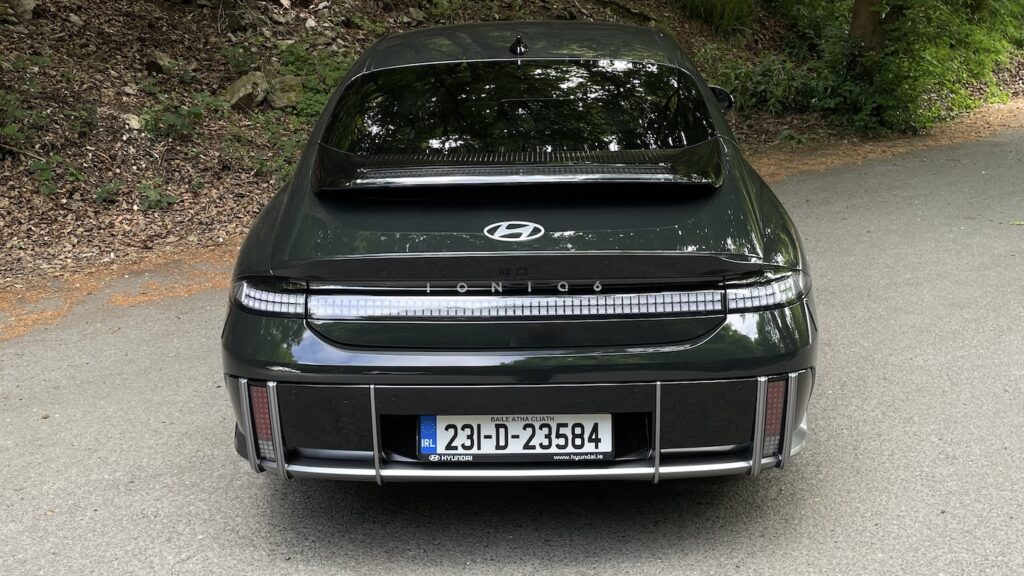
Energy consumption is always high on any motorist’s agenda and it is here the Ioniq 6 moves the game on a bit with the potential to consume relatively miserly amounts of electricity in day to day use. Car companies who delivered the soft roader SUV body shape have realised the aerodynamic frailties of the blocky body form and understand how tricky it can be to make one slip through the air on the open road. In urban environments where traffic travels at less than 80km/h, aerodynamics are not very important but if you take to the motorway in a car with a poor drag co-efficient – it will gulp through fuel/electricity at an alarming rate due to the force needed to push through the dense air. Low-rise, sleek cars perform better in this environment and it is here that Ioniq 6 really shines.
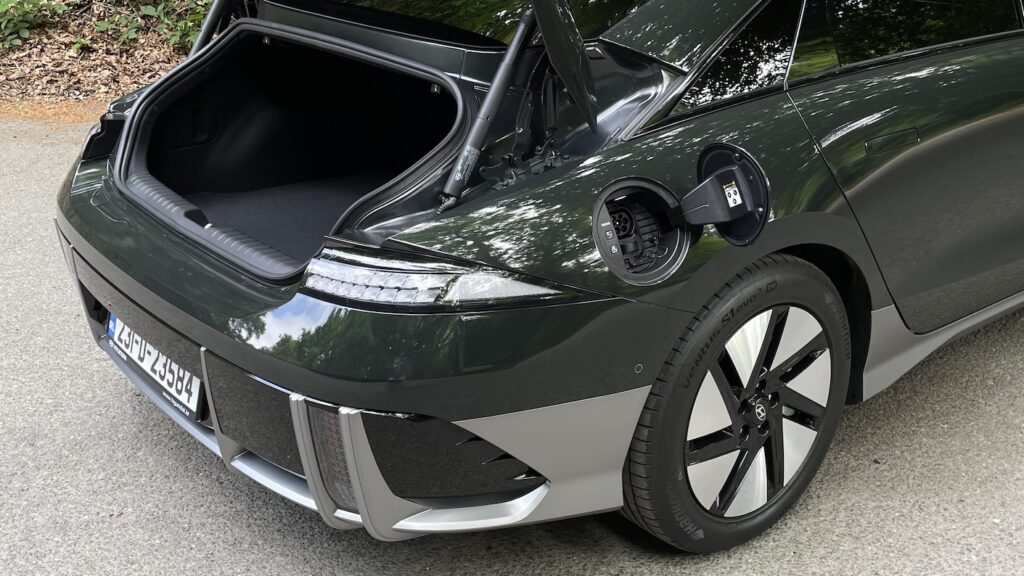
To test the Ioniq 6’s slippery shape I did a couple of 350km plus drives. These were carried out in ideal EV temperatures and on dry roads – with little wind. I managed an average electricity consumption of 13kW/100km on both occasions – an astonishingly good figure for a five seat car loaded with circa 200kgs of me and cargo in the boot! To attain this figure I drove like a saint and used its ‘eco’ drive mode so the air conditioning was off but the fan was on (low). I seldom went faster than 110km/h sitting at 100km/h on motorways for most of the time (without using its excellent adaptive cruise control) and also in or around the speed limits on B and C roads. I travelled from my base in Wicklow, to Dublin and on to Kenmare in Kerry via Limerick and Tralee. From outside Kenmare to Killarney via the ring of Kerry I managed an astonishing 11kW/100km consumption using just 3% of the car’s 77kWh battery. Back in day to day urban driving, without paying much attention to my driving style, I still averaged 15 to 16 kWh/100km – similar to what I’ve achieved in several small EVs. Hyundai quotes a possible maximum range of 614km. Even applying the usual motoring critics’ advice of “take two thirds of what they claim to get its realistic EV range” the Ioniq 6 is real world impressive. When provoked it can sprint to 100km/h in 5.1 seconds (AWD version). The 800v battery can ‘ultra fast’ charge (where available) adding 315km of range in 15 minutes. As with many Hyundai/KIA EVs you can use the car as an electricity power bank (V2L) for external devices.
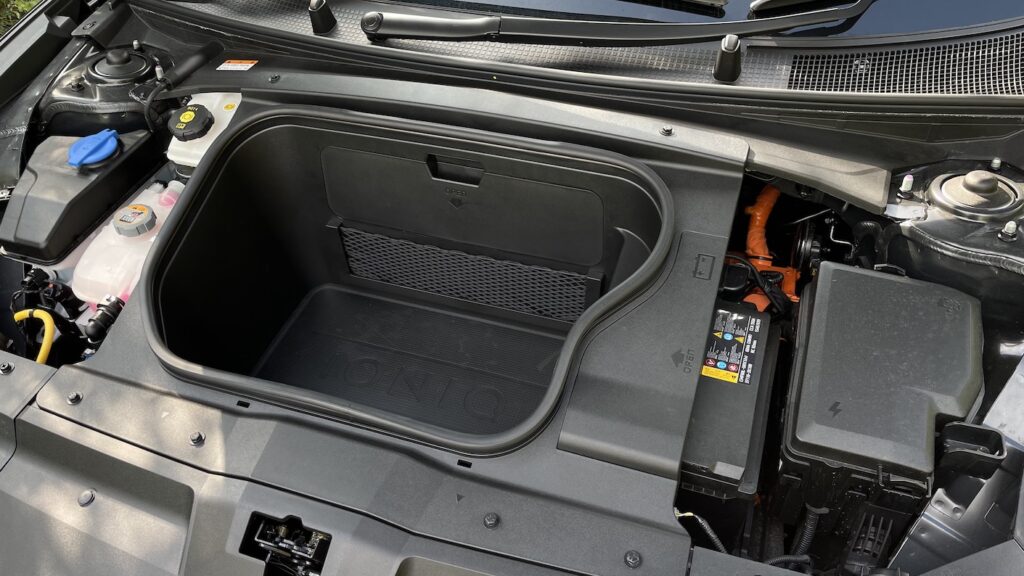
Frunk – handy for extra storage or wet cables!
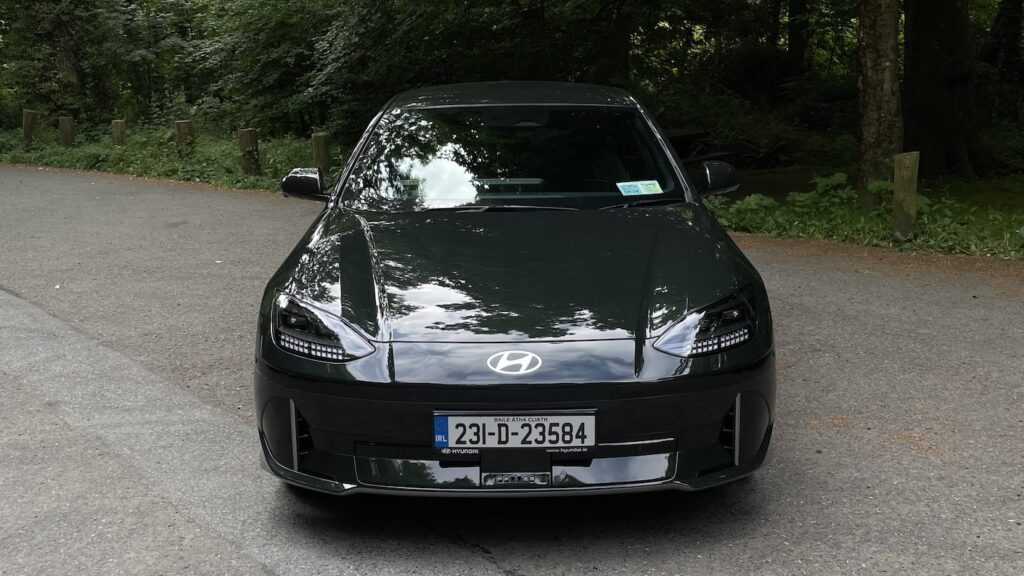
The ride quality can feel firm at times due to its smart looking large alloy wheels but what is most impressive is the near-silent cabin ambience – all that aero work delivers a blissfully hushed cabin that makes motorway and open road cruising audibly a luxury car experience. The Ioniq 6 is a very safe car to with excellent crash test performance and lots of ADAS driving aids as standard. Driving at night is effortless thanks to great matrix adaptive lights. The Hyundai Ioniq 6 is simply class leading, and we like it a lot. Michael Sheridan


